The journey of playing top golf courses around the world takes you down unexpected roads. I was sitting at my desk at LINKS Magazine when an email came into my inbox. It was from the USGA and it offered the chance to play Oakmont in the 2016 US Open Media Day. The only problem was that it was a Tuesday, and the media day was less than a week away. I immediately booked a flight with my boss at LINKS and we started planning a last minute trip to Pittsburgh!
The funny thing is, I’ve been planning a Pennsylvania golf trip for this coming August. We have a round booked at Merion and Oakmont is a possible round on that trip. The thought crossed my mind to hold off and wait to play the course in August, but like they say, “a bird in the hand is worth two in the bush.”
Because it was the USGA Media Day, we attended a short presentation from a number of Oakmont and USGA brass before lunch in the clubhouse and an afternoon round. One of the most interesting speeches came from Mike Davis, the President of the USGA. He said that Oakmont was one of the only courses in the states that could host a US Open with two weeks notice. The course stays in championship condition throughout the season. Among many other things, he said that the normal course rating at Oakmont is 77 from the tips, but the course rating is close to 82 come US Open week… let that sink in while you gain even more appreciation for Johnny Miller’s 63 back in the day (and remember it’s a par 70)!
Oakmont was founded by Henry C. Fownes. He was a steel man who sold his business to Andrew Carnegie. Carnegie got him into golf, and Fownes proceeded to find land just outside of Pittsburgh to build a course of his own. Like many of the great course founders/designers, it was his “one hit wonder,” and he settled into a penal mindset with the design. Henry and his son William, who followed his father as club president, added bunkers, sped up the greens, and did everything in their power to make golf at Oakmont hard. William Fowne’s famous quote, “a poor shot should be a shot irrevocably lost” sums up the Fownes’ mindset very well.
I was told before the round that Oakmont was incredibly difficult. I’ve played very difficult courses before, but Oakmont was different. There was literally no margin for error. Combine that with having never seen the course before and it was all made tougher. My caddie would say, “Hit this down the left side of the fairway.” I would proceed to hit a well-struck drive down the middle, just right of target, and we would find it in the thick right rough. The greens speeds were some of the fastest I’ve ever seen, which made the short game exponentially harder. The player with a great caddie and tons of course knowledge will do well this June in the US Open.
My only “negative” comment about the club addresses something outside of their control. The Pennsylvania Turnpike runs right through the middle of the course. Crossing the bridges twice during the round isn’t tough, and the interstate is sunk into the ground, so it’s not even visible from much of the course. My complaint has to do with the noise. It is constant on much of the course. It isn’t a huge negative, but it means that Oakmont lacks that “sanctuary” feel that is present at many of the other truly great courses.
Hole #1 – 441 yards – Big drives will catch a downhill slope, leaving a wedge into the sloping green. Approach shots run hard left once on the putting surface.

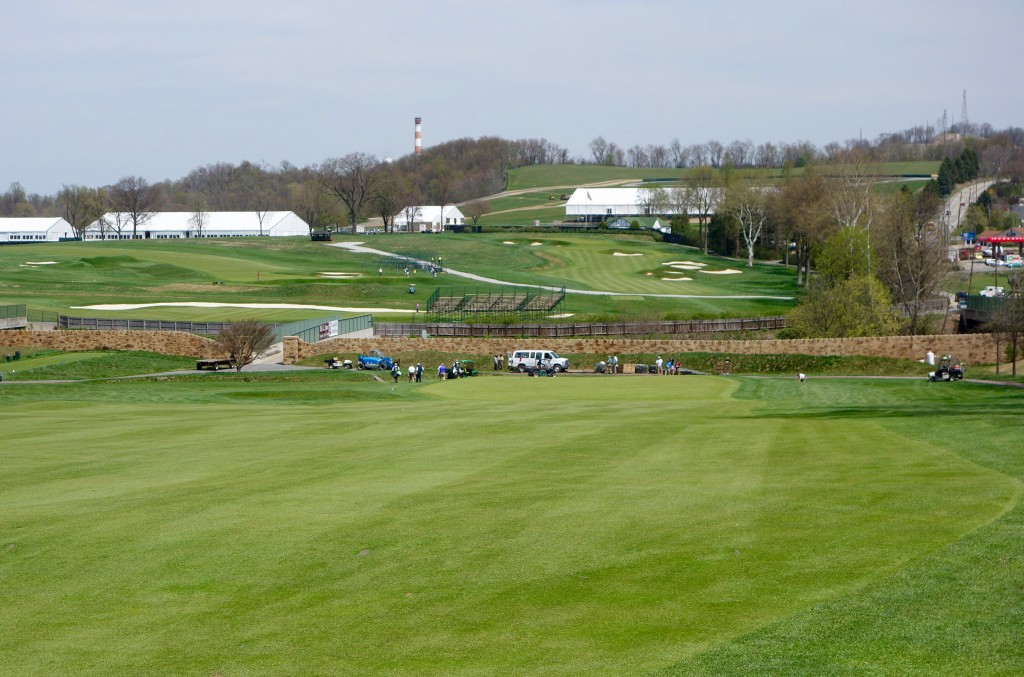
Hole #2 – 325 yards – Long irons or hybrids land in the widest part of the fairway and leave short irons into the green. The dry creek bed along the left edge of the fairway is marked as hazard, but you can pitch out in dry conditions.
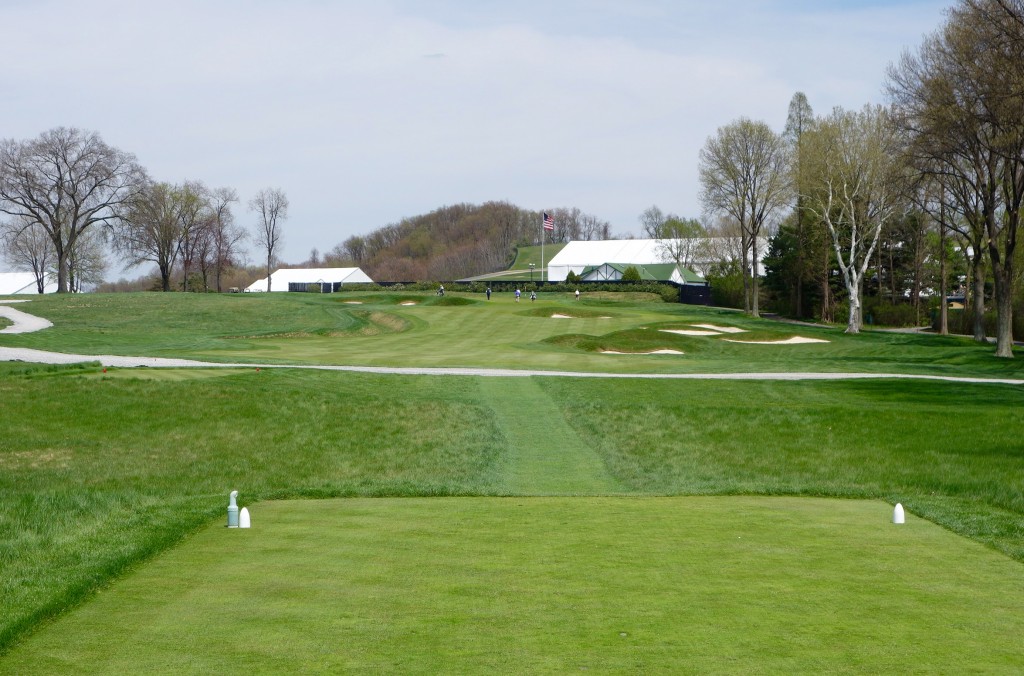
Hole #3 – 390 yards – Yes, those are the Church Pews along the left side! Don’t be short on this green and just as important, don’t be long. Balls run over this green easily into a difficult collection area (as I found).
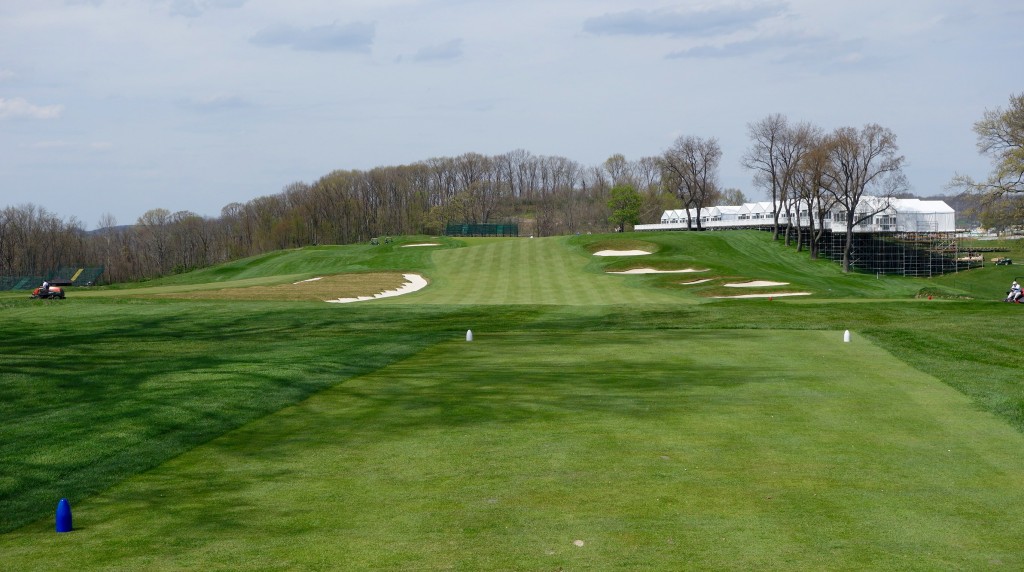

Hole #4 – 512 yards – Although it isn’t mentioned much, the Church pews are in play again on the 4th hole. The blind layup and subsequent approach to the narrow green make it extraordinarily difficult.
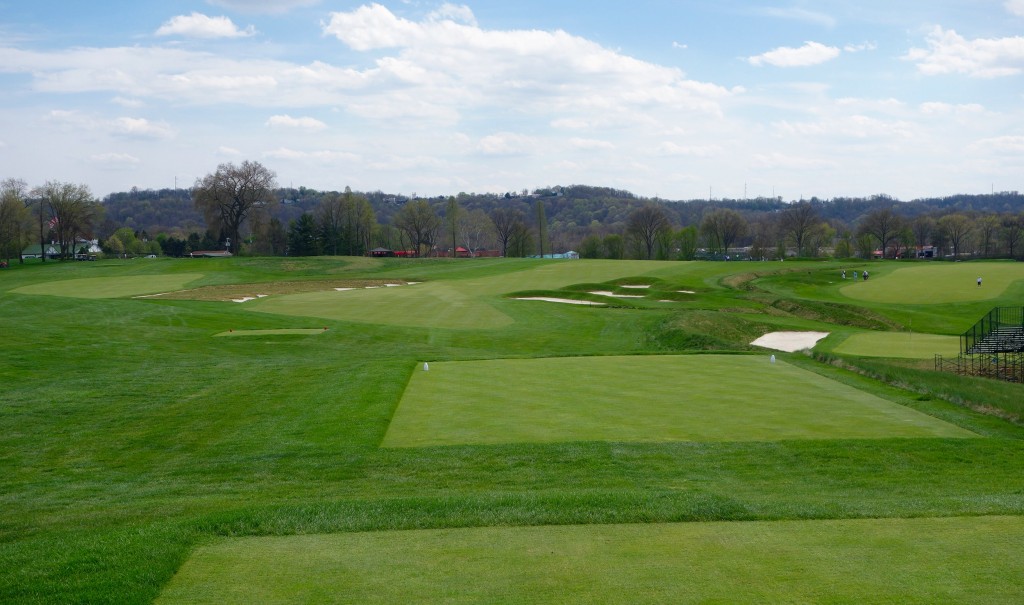

Hole #5 – 349 yards – Favor the right side of the fairway on this blind tee shot. The short approach to the small and undulating green will be a fun one to watch during the US Open.
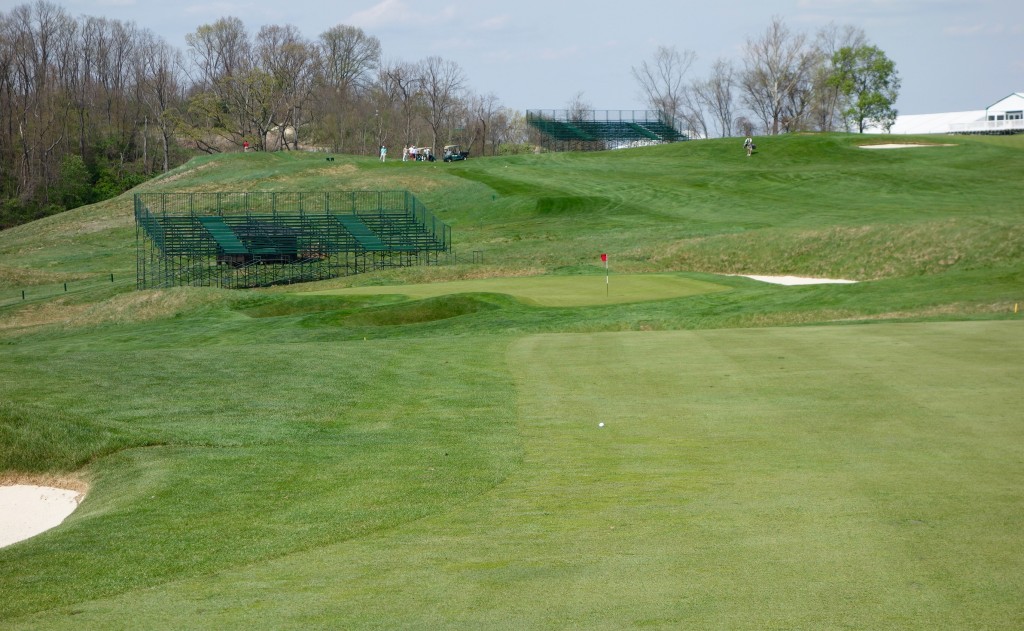
Hole #6 – 168 yards – One of the course changes since 2007 was flattening an area of this green to create more pin placement options… and it’s still extreme!

Hole #7 – 370 yards – The fairway is fairly wide for this blind approach, but the bunkers and deep rough surrounding the green are no joke.

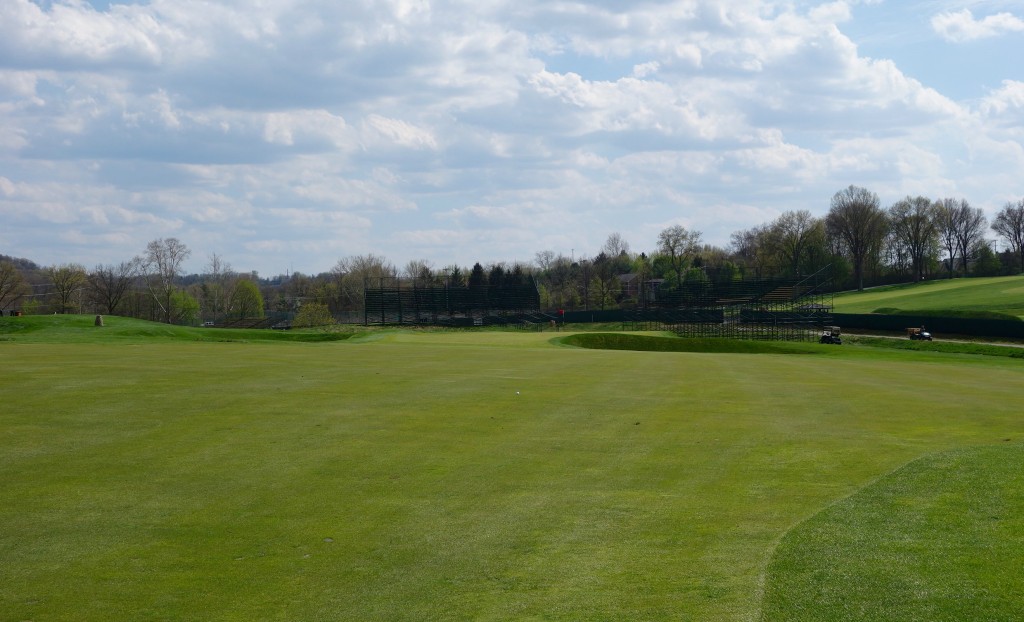
Hole #8 – 225 yards – This is the legendary 300 yard par 3. It played about 235 during our round, but the large open front of the green allows for running approaches.

Hole #9 – 462 yards – The 9th plays back up to the clubhouse and a massive green. The rear of the putting surface doubles as the practice putting green. The distance on this hole may seem short for a par 5, but it plays uphill the whole way.

Hole #10 – 440 yards – While the 9th played longer uphill, the 10th plays shorter back down the hill. It narrows substantially closer to the green, so bigger hitters can just play a 3-wood down the right side of the fairway.
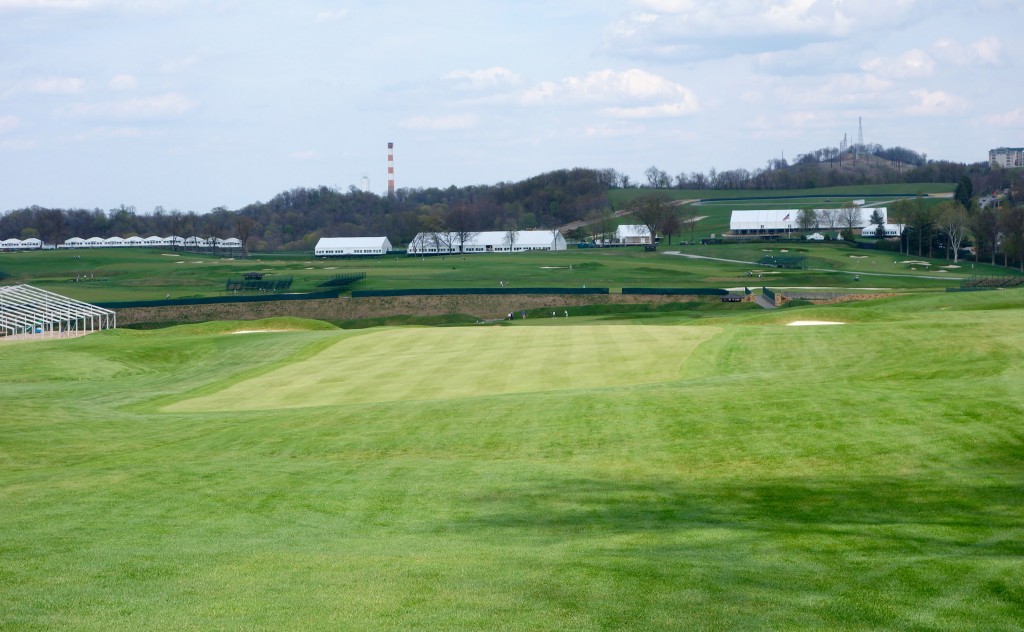

Hole #11 – 328 yards – Back up the hill again! Drivers aren’t necessary here for longer hitters, especially since a driver could reach the creek.
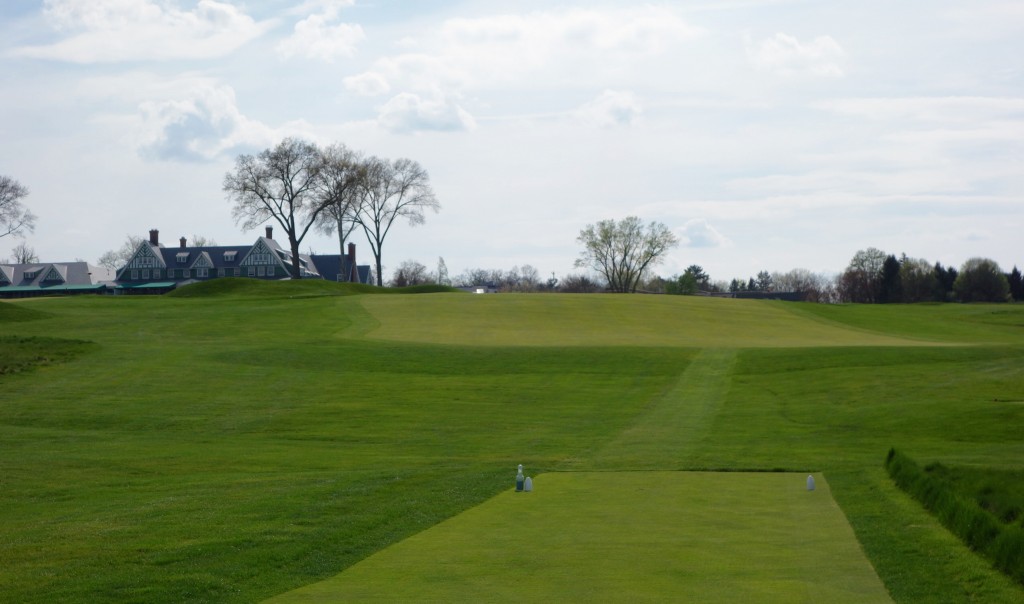

Hole #12 – 562 yards – This tee shot begs for a smashed cut that runs downhill and right on the sloping fairway. This is a birdie opportunity.

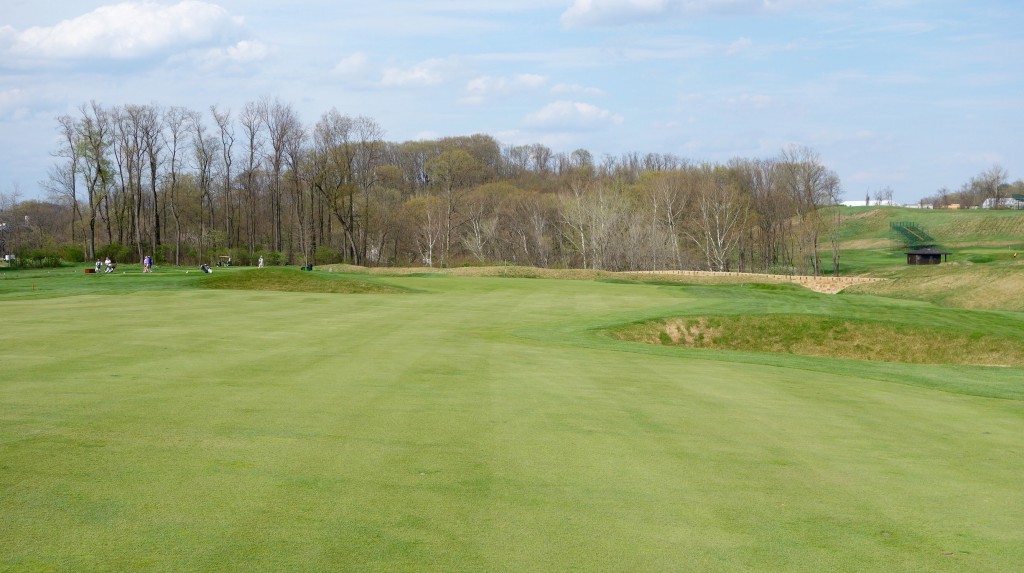
Hole #13 – 153 yards – Although the green is sloping, this is one of the easiest holes on the course. It should reflect that in US Open scoring.

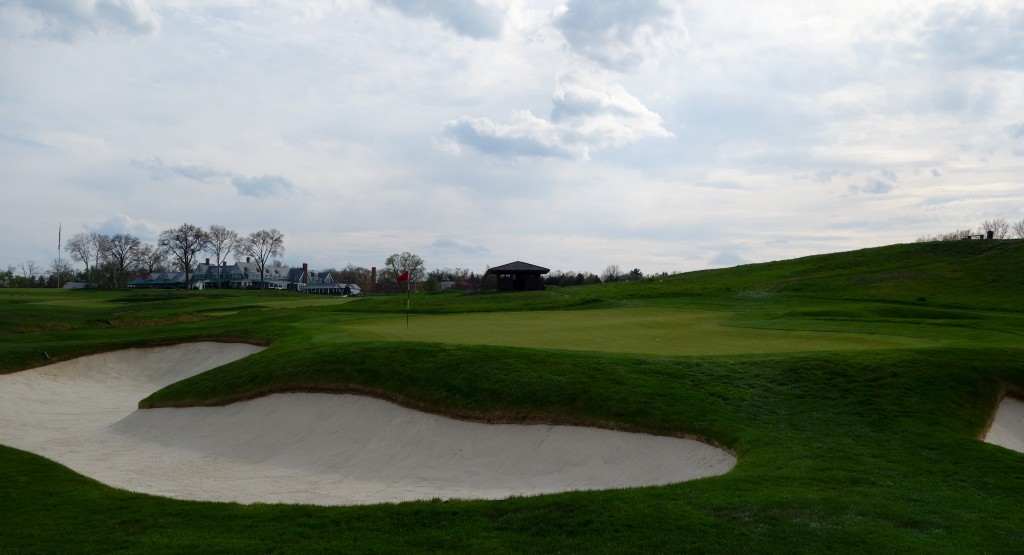
Hole #14 – 340 yards – Difficult bunkers line both sides of this fairway, which narrows closer to the green.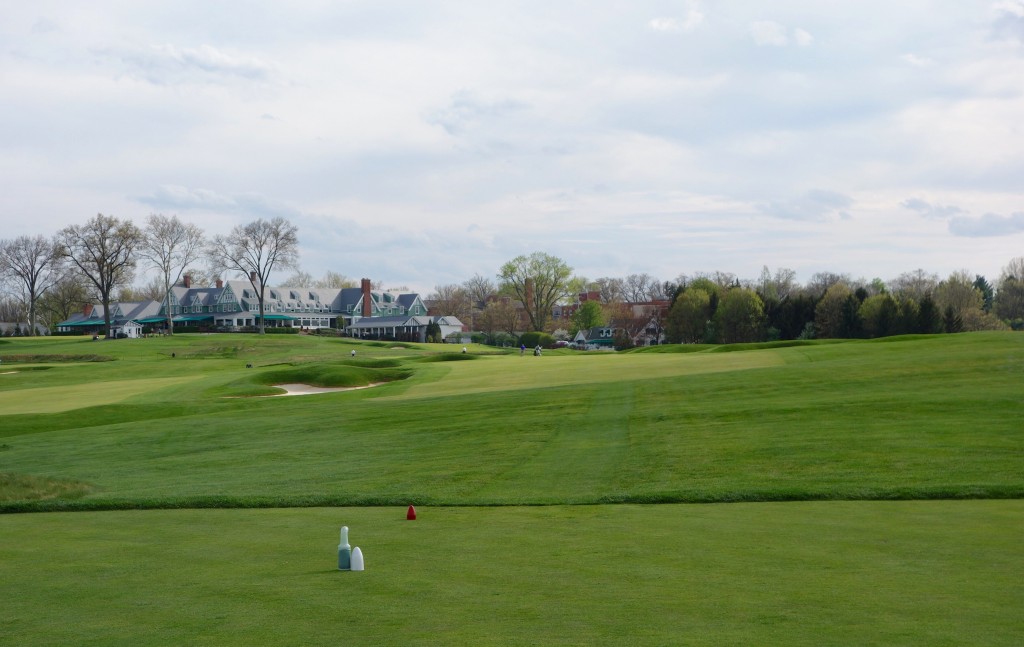
Hole #15 – 434 yards – The tough finish begins here. The approach shot is blind, and penal Church Pew bunkers line the left side of this fairway (Did you know there is more than one set of Church Pews at Oakmont?).

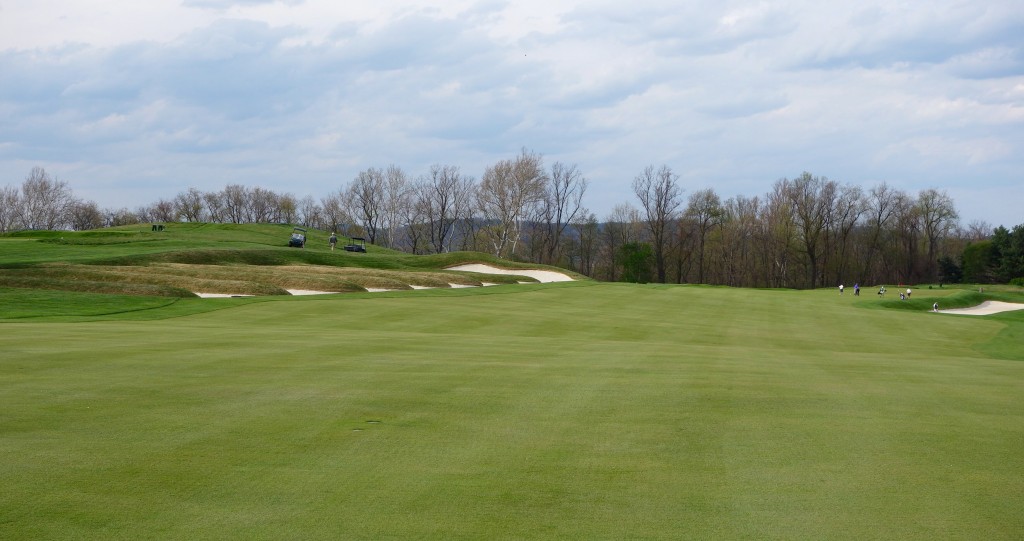
Hole #16 – 211 yards – This hole is a beast. The bail out is left, but that leaves a very long put across the green to a back pin (click to enlarge the photo and look at the back right pin).
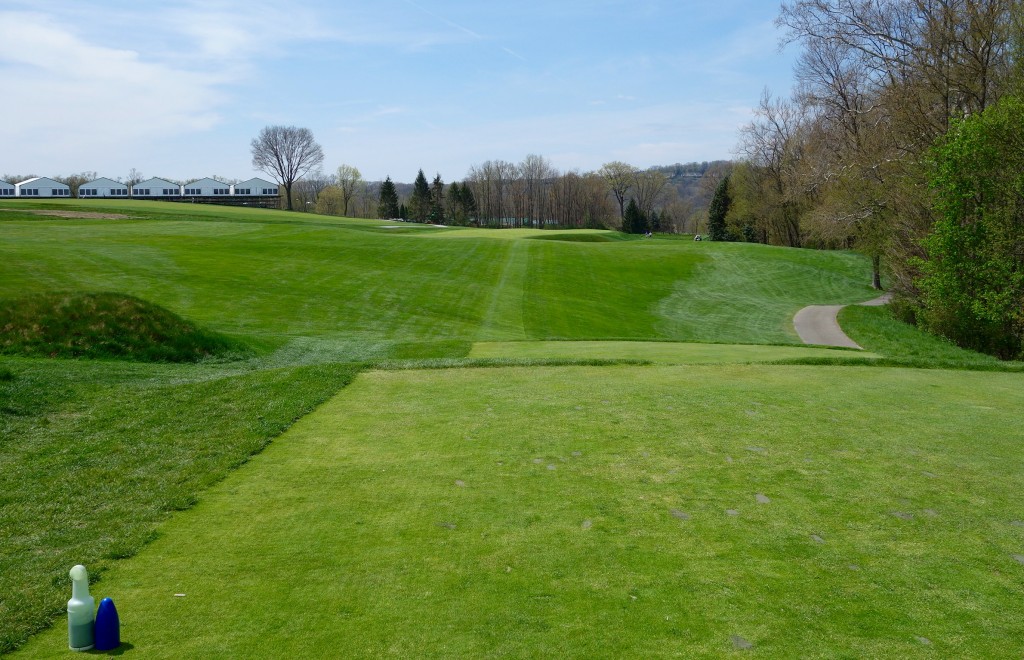
Hole #17 – 296 yards – This hole can make or break someone’s tournament (or round in the amateur’s case). Smart money plays a short shot up the right side and wedge into the green, but bold players can go for the green. See the small red flag in the distance? Also, don’t end up in any of the bunkers around the green.
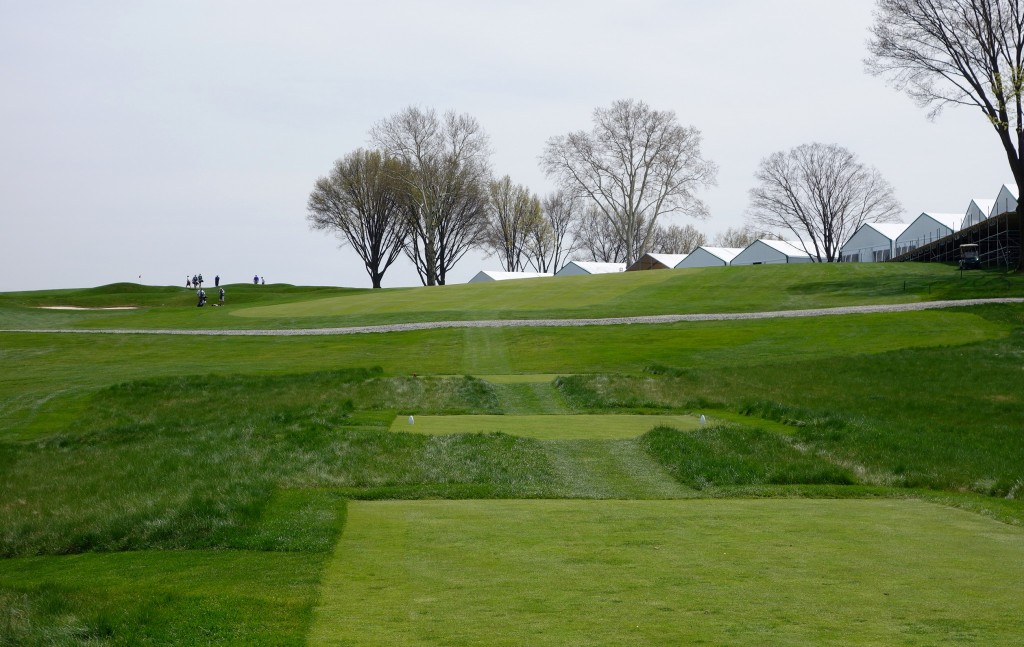
Hole #18 – 430 yards – It all ends with a picturesque hole back to the clubhouse. The fairway bunkers on the right are very much in play. Most difficult of all is the sloping green – DON’T be above the hole.
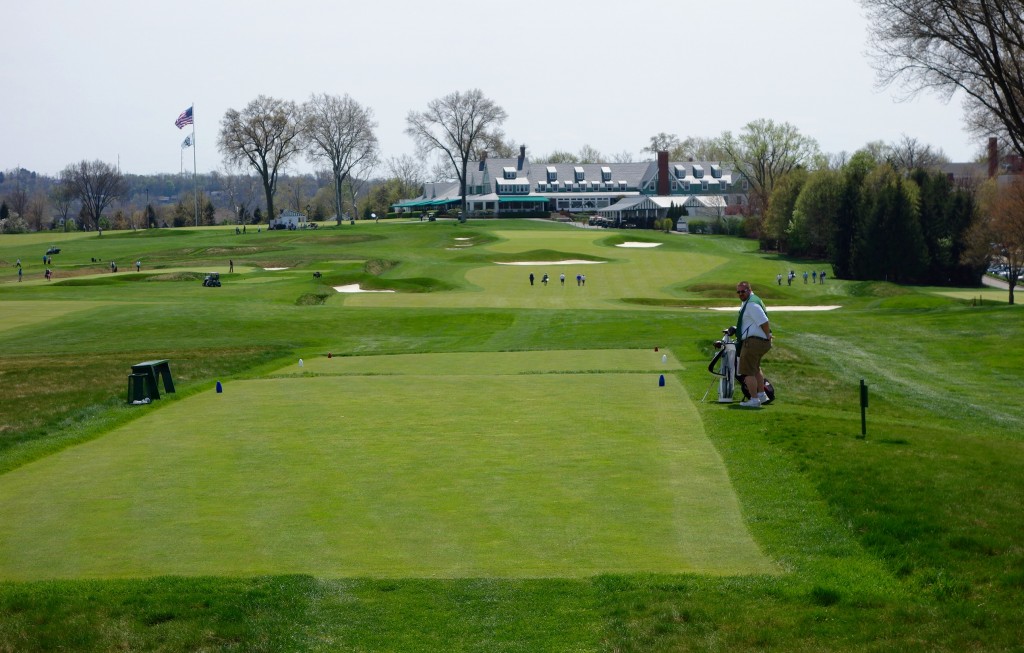
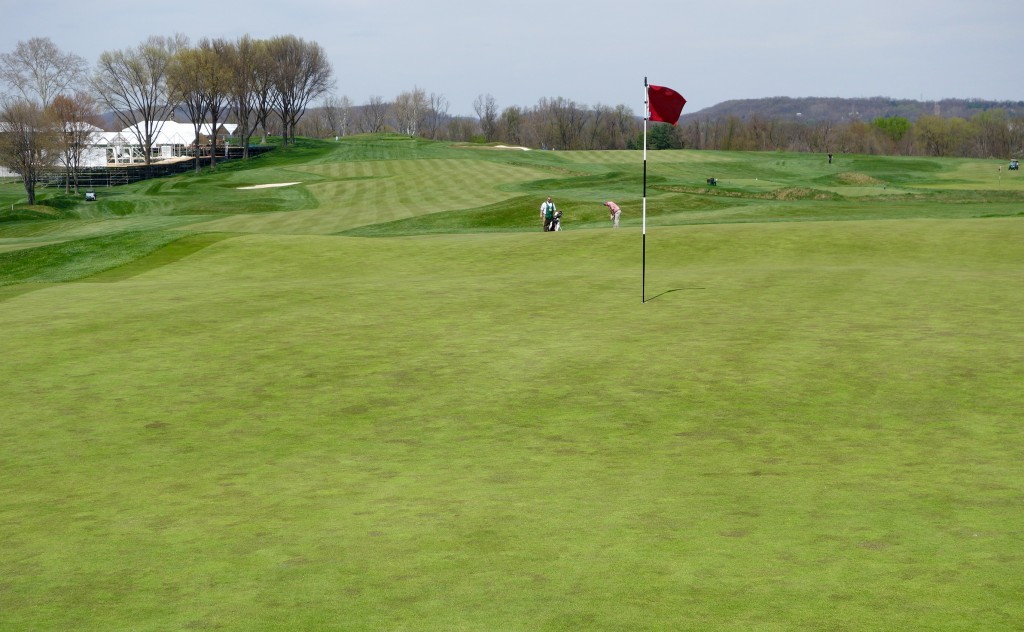
Oakmont Country Club exudes history, tradition, and beauty. The clubhouse and locker room are on-par with some of my favorites. The course is extremely difficult, and frankly, it would be discouraging to play when struggling with your game. That being said, I’m sure it’s a fun feeling to shoot mid 80s at Oakmont before you go bust a 70 at any typical golf course around the country!

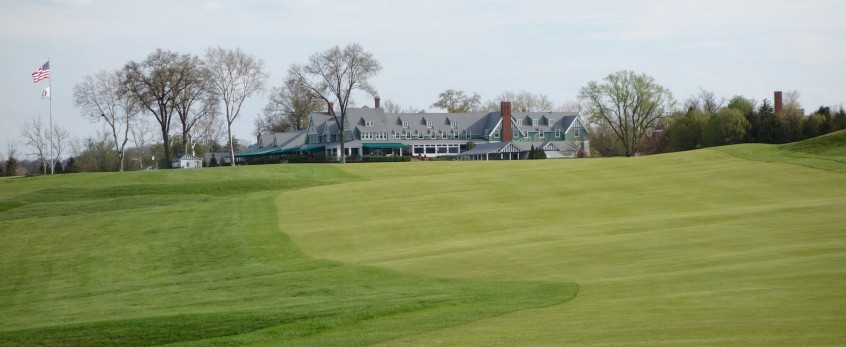
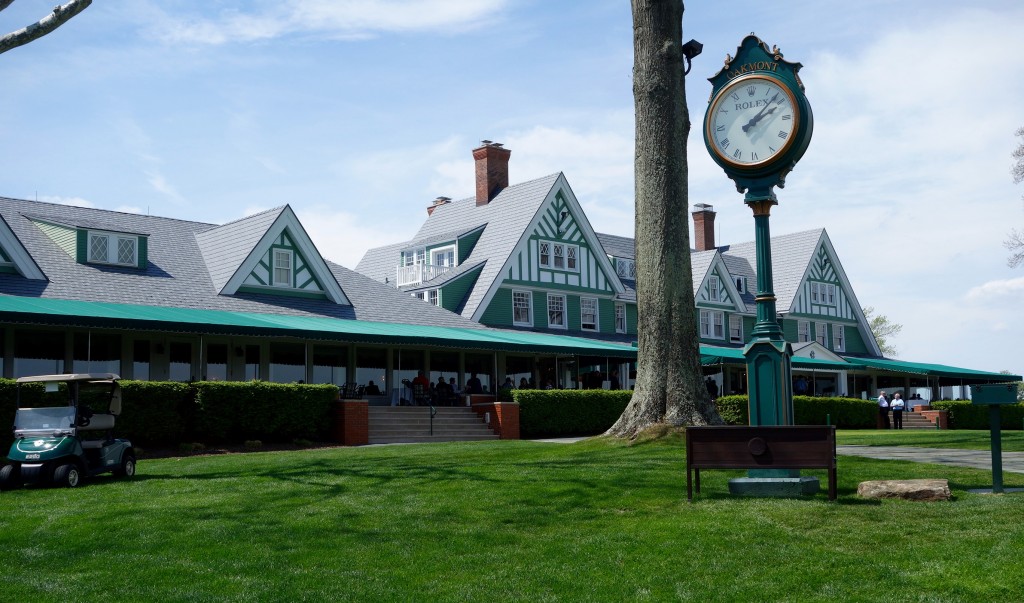

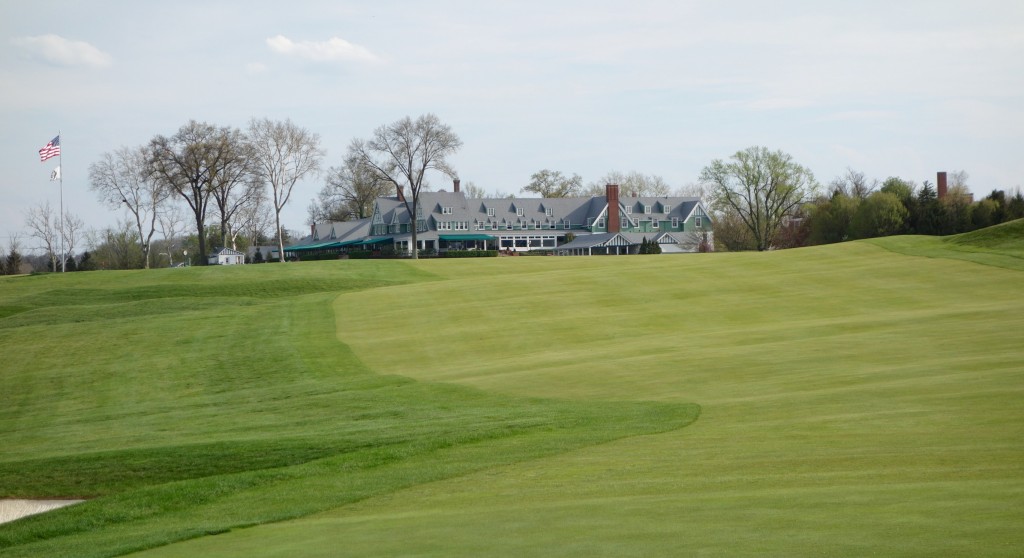
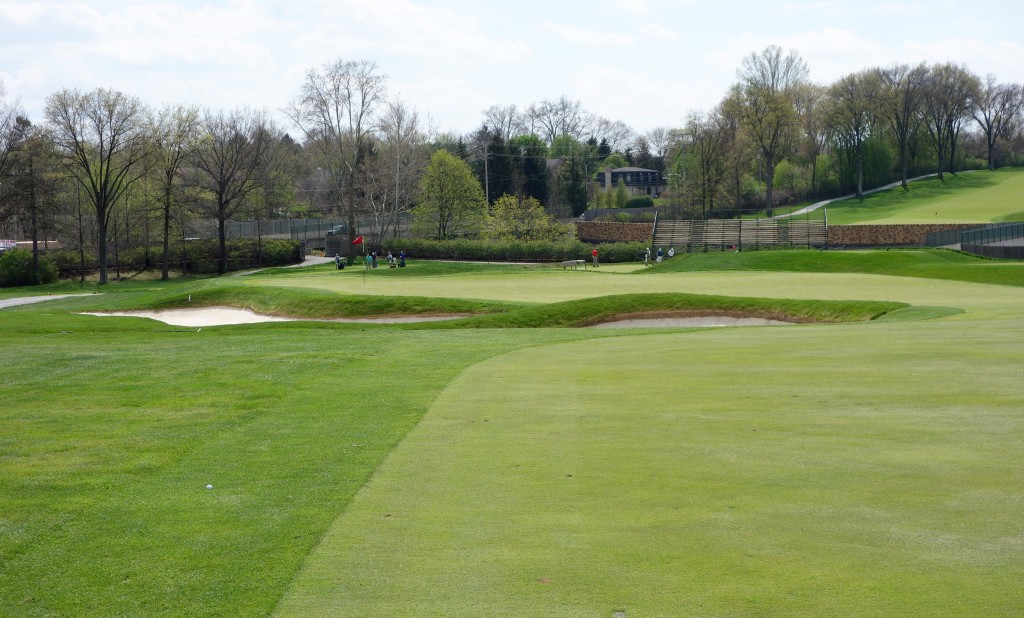
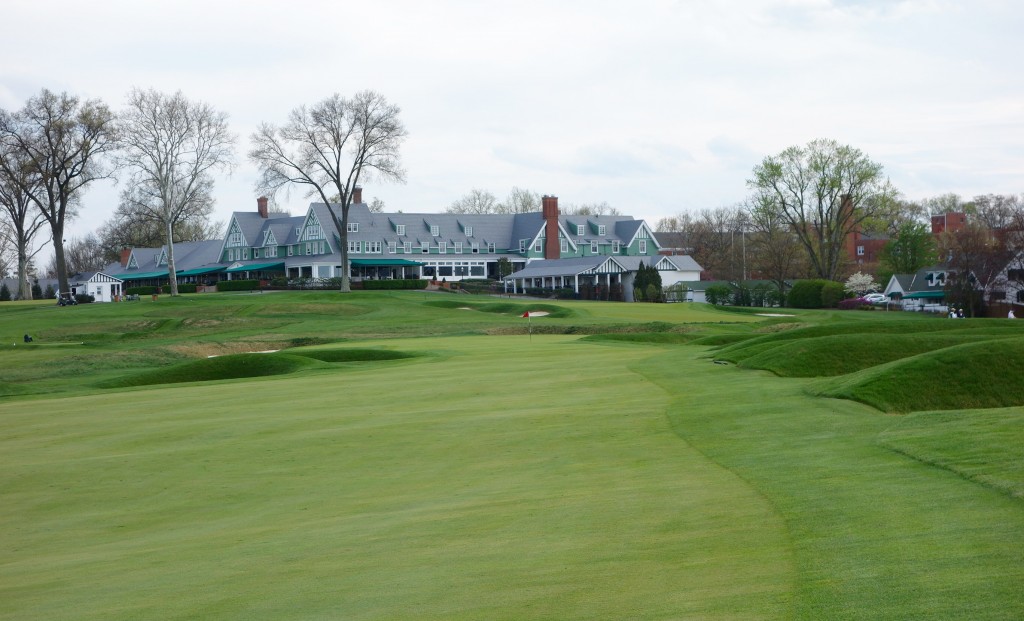
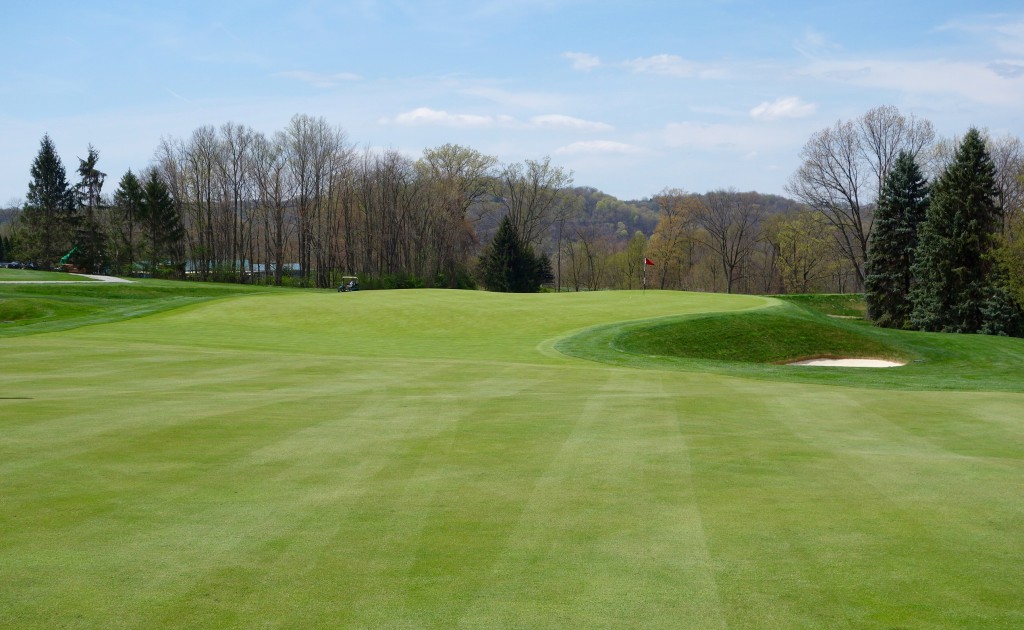


One Comment on “Oakmont Country Club Review”
Mr. Loomis: This is one of the courses I was fortunate to see that I referenced in my email to you this morning. I was amazed at the contrast of #1 and #10 (downhill) and #9 and #11 and #17 and #18 (uphill). #17 green is very small, narrow, and wicked. The left trap on #17 at ground level seemed to be 7 feet below the green. As I looked at the green from the grass behind that trap (with the green well above my head), I wondered how anyone could lob any wedge on to this green. I certainly don’t have that shot.